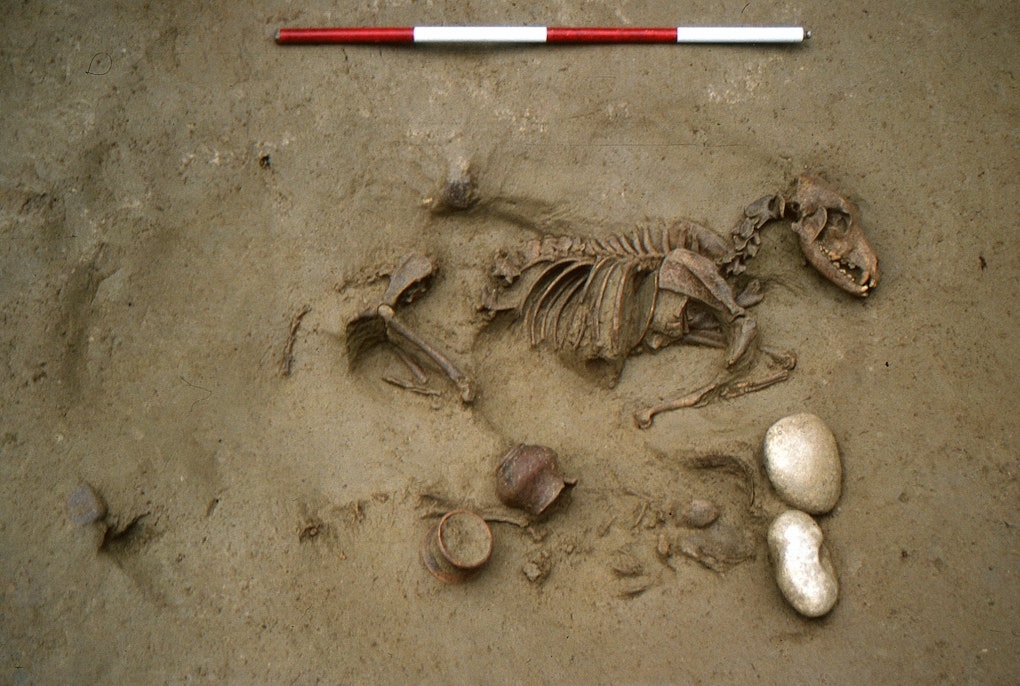magazine_ Interview
What Ancient DNA Reveals About Modern Diseases
Paleopathologist Albert Zink explains how to untangle the chaos of ancient genetic traces and why blood vessel calcification is not just due to a bad lifestyle.
Paleopathologist Albert Zink reconstructs the co-evolution of humankind and our illnesses. In this conversation, he explains how he disentangles traces of messy ancient DNA and then puts them all back together. And why an unhealthy lifestyle isn’t the primary cause of clogged blood vessels.
Professor Zink, you look deep into the genomes of mummies as well as their pathogens to understand which diseases have accompanied us throughout our evolution. But how much DNA is really left after thousands of years?
Albert Zink: Not much. Right after an organism dies, its genome starts deteriorating. DNA has an average half-life of about 500 years. As time progresses, it disintegrates into pieces through environmental and chemica l processes. You can probably imagine how much is left after a body has been laying around for 6,000 years. So, what we find are tiny fragments of ancient DNA, only a few thousandths as long as a chunk of a modern double helix. We then have to put these puzzle pieces back together to form a full genome. That is what we did with the gastric bug Helicobacter pylori, the fragments of which we found in Ötzi’s stomach.
Ötzi was indeed well preserved. But you work on mummies from all over the world, and most are not in as great shape as the Iceman. How does a mummy’s place of discovery influence the quality of its DNA?
Zink: The differences are huge and depend on a number of factors. The best DNA comes from mummies conserved under cool, dry, and airtight conditions. Humidity and heat have the opposite effect, ̶ they gradually degrade not only the DNA but in some cases, the entire mummy. That’s why we don’t find mummies in tropical regions. And then there is acid, another a huge factor. Acidic soil, as can be found in moors, beautifully preserves the skin of bog bodies like the Danish Tollund Man, but the acid completely destroys the DNA. In some cases, it can dissolve a mummy’s entire skeleton.
Let’s assume a mummy had been preserved under perfect conditions. What is the oldest it could be in order for you to be able to harvest intact DNA?
Zink: The methods for extracting DNA samples have been getting more precise for decades. Today, we only need a few milligrams of a tissue sample. While we cannot establish a hard age limit, the oldest usable DNA to date, stems from the bones of a 700,000-year-old horse that was discovered in Canada. We know for sure that there is no DNA left once an organism has been fully fossilized, since its organic matter has mineralized completely. That is why finding dinosaur DNA is science fiction made in Hollywood. For now, at least. But because our methods for DNA extraction are continuously evolving though, who knows? Perhaps at some point we’ll be able to extract a sort of DNA fingerprint from fossils.
"Humidity and heat degrade mummies. That’s why we don’t find mummies in tropical regions."
Albert Zink
How do you discover pathogens in the samples you get?
Zink: After the extraction, we need to clean the samples. The samples are often contaminated, with traces from the embalming process for example. We then use DNA sequencing to put the genome’s building blocks back in their original order. The technique we use is called Next Generation Sequencing, and it detects every trace of DNA in a sample ̶̶human and microbial alike, including traces from environmental organisms that aren’t part of the mummy itself. Software then sifts through these fragments and compares them to known pathogens from DNA databases. Essentially it’s like placing little puzzle pieces over a blueprint and looking for matches. We often find evidence for pathogens even at this stage.
That sounds like a tricky process, given how many different DNA snippets you get from one sample. Are the pathogen traces not vanishingly small?
Zink: They are indeed. Sometimes the pathogen’s DNA makes up less than one percent of the originally extracted material. But we can extract specific DNA signatures from this heterogenous blend, ones that belong to a specific pathogen only ̶ like the Helicobacter we found in Ötzi. We also did this with traces of a bacterium we found in a mummy discovered in a Swiss church. The share of pure pathogen DNA was of course much higher in such a concentrated sample. That made it easier for us to compare it against the database. The process may sound simple, but it is a lot of work. To be absolutely certain of a specific pathogen, we have to reconstruct its entire genome.
But a comparison can only work with known and catalogued pathogens. Do you ever come across pathogenic DNA patterns you cannot find a match for?
Zink: That happens regularly. We can only run full comparisons with previously documented pathogens. When we cannot find a perfect match, that does not mean it’s an entirely unknown pathogen. It could be the early, unknown ancestor of a tuberculosis bacterium that at some point genetically diverged from today’s strains. What really helps us with the identification is an additional look at the morphology of a mummy: for example, if tuberculosis has marred its host’s bones. Such clues substantiate our diagnoses, even when the pathogen’s DNA is incomplete. But a little uncertainty remains. The mere proof of presence of a pathogen does not mean it actually infested the mummy it was found on.
"Cardiac disease is not a modern phenomenon, as mummy findings from across the world from Asia to South America show."
Albert Zink
Why not?
Zink: Some microbes can be found both in humans and the environment that surrounds us. It is quite possible that some of them attached themselves to a person a while after they died. We can easily determine, whether pathogens infested a body later on, because the DNA is well-preserved. But imagine microbes that populated a 5,000-year-old mummy 1,000 years after it originally died. All of the DNA fragments would then show up as ancient DNA and age-wise, would be indistinguishable from one another. The amount of pathogen DNA we find on a mummy can also be deceiving. Here is an example. Clostridium bacteria causes severe illnesses such as botulism and tetanus. But they also multiply exponentially on decaying corpses, which is why we frequently find traces of them in our mummies’ DNA samples. But that does not imply that a person suffered from one of these illnesses in life.
What can modern humans learn from our ancestors’ illnesses?
Zink: Some insights have shifted our view on certain known pathogens. Take Helicobacter pylori, the pathogen we found in Ötzi’s stomach. Current treatment standards suggest eradicating the bacterium with antibiotics is the best option. We know from our findings that this pathogen has co-evolved alongside humans. It does cause ailments like ulcers and cancer and in such cases, patients absolutely do need to be treated. But we also know that such complications arise only in ten percent of infected people. In the other ninety percent, the bacterium might actually be beneficial. There is evidence that being infested with the bacterium might alleviate allergies. If this can be substantiated, we would have to consider only treating the problematic cases. And it shows that we might have at least in part, misjudged this pathogen.
Speaking of misjudgment. Ancient DNA shows that we have overestimated our influence on cardiac disease. How so?
Zink: For a long time, we have thought that lifestyle is the primary factor that influences whether we contract cardiac disease. Of course, smoking, lack of exercise and poor diet all are influential factors. But these are relatively modern factors and are not the only ones. Cardiac disease is not a modern phenomenon, as mummy findings from across the world show. From Asia to South America, what we see is that cardiac disease has always had a genetic component that plays a major role. Sadly, that component is often dismissed as being part of one’s fate. Ötzi is a good example. He was not obese, he did a lot of exercise, didn’t smoke and ate a rather balanced diet, so none of the risk factors were at play. Yet, he had a strong genetic disposition for developing cardiac disease. And indeed, we found clear signs that both his heart and his abdominal artery were sclerotic. If medical research would take such predispositions more into account, we could see exciting advances in personalized medicine.
Biography
Albert Zink is an anthropologist and associate professor at the Ludwig-Maximilians-Universität in Munich. He has directed the Institute for Mummy Studies at Eurac Research since 2007. His passion for mummies has endured since he first became involved with them while studying biology in Munich. He deals not only with the Iceman, but with mummies from all over the world, including the famous Egyptian kings Tutankhamun and Ramses III. When he’s not unwrapping the mysteries of the past, he picks up his guitar and plays jazz or songs composed by himself.






